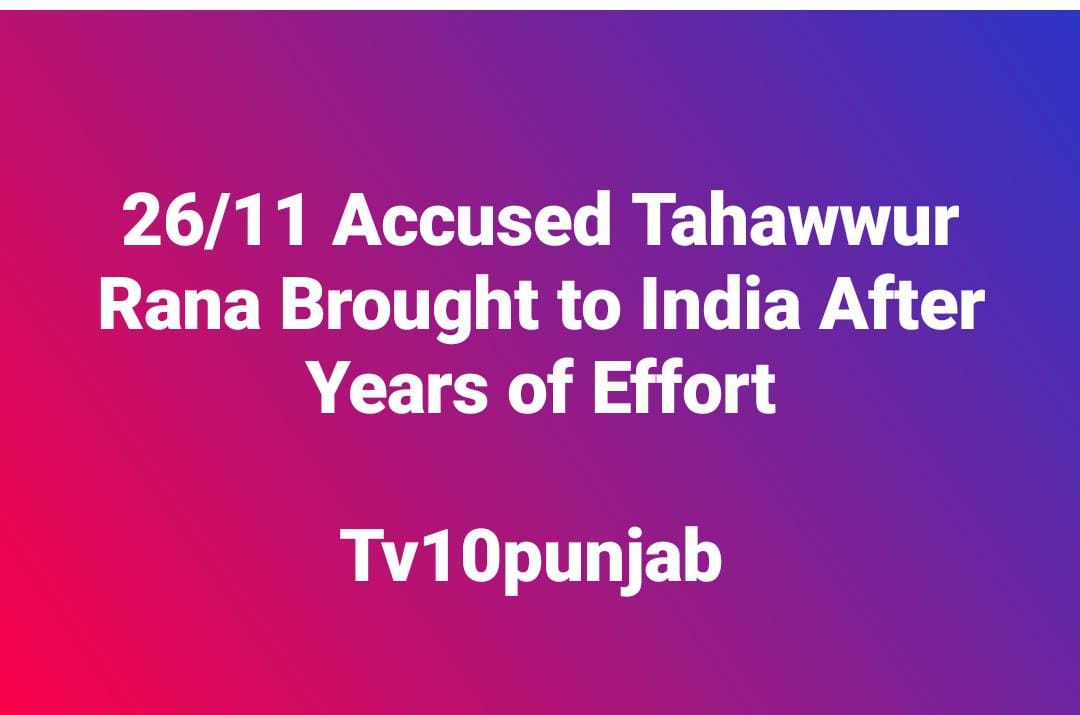National Desk
11 April
Sandeep Dhand
Journalist & Research Analysist
Tahawwur Hussain Rana, one of the key accused in the 26/11 Mumbai terror attacks, was finally brought to India from the United States late Thursday night under tight security. The 64-year-old Pakistani-origin Canadian citizen was produced before a special NIA court in Delhi, where Judge Chandrjeet Singh presided over the proceedings. Senior counsel Dayan Krishnan and Special Public Prosecutor Narinder Mann, representing the National Investigation Agency (NIA), requested 20 days of custodial interrogation. After hearing both sides, the court reserved its order on Rana’s custody.

Rana’s extradition from the US ends years of diplomatic and legal proceedings. He had been under legal custody in the US, where he fought a prolonged legal battle against extradition. The US Supreme Court recently dismissed his appeal, clearing the way for Indian authorities to bring him back. Before his production in Patiala House Court, media personnel were cleared from the courtroom premises due to security concerns.
Rana arrived in Delhi earlier in the day on a special aircraft from Los Angeles. His arrival marks a significant step forward in India’s effort to bring all conspirators of the 2008 Mumbai attacks to justice. The NIA officially arrested him at the airport, and he is expected to be housed in a high-security cell at Delhi’s Tihar Jail.
Rana is now the third person to face trial in India for the 26/11 attacks, after Ajmal Kasab and Zabiuddin Ansari alias Abu Jundal. Kasab, the lone surviving attacker from the carnage, was executed in 2012.
According to officials, Rana had close links with David Coleman Headley (also known as Daood Gilani), another key conspirator in the 26/11 attacks. Headley, a US citizen of Pakistani origin, had conducted surveillance of multiple targets in Mumbai, posing as part of Rana’s immigration consultancy firm. Rana allegedly facilitated Headley’s missions under the guise of business activities.
A statement by the NIA said that bringing Rana to India is the result of persistent efforts and coordination with several US agencies, including the Department of Justice and US Sky Marshals, along with Indian intelligence units. The Ministry of Home Affairs and the Ministry of External Affairs also played crucial roles in the extradition process.
The final green light for the extradition came during Prime Minister Narendra Modi’s visit to the US in February. At a joint press conference, then-US President Donald Trump had affirmed America’s support for handing over one of the “most dangerous individuals” to India for trial.
Rana, a former Pakistan Army doctor, had migrated to Canada in the 1990s and later moved to the US, where he established an immigration consultancy firm in Chicago. This firm was used as a cover for planning and facilitating the 2008 attacks that left 166 people dead across multiple locations in Mumbai, including a railway station, luxury hotels, and a Jewish center.
His extradition is expected to shed more light on Pakistan’s involvement in the attack and expose further links that remained undisclosed until now. Indian agencies hope that Rana’s questioning will provide valuable insights into the planning and support system behind one of the deadliest terror attacks in India’s history.